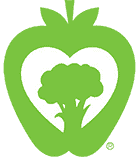Nestlé Creates Medical Foods for Growing Market
Let food be thy medicine. With this mantra, food manufacturing giant, Nestlé, is developing a new line of food – medical foods. Medical foods are not your usual protein or nutritional bars. They are prescription-based drinks and powders that are designed to meet the nutritional needs of patients suffering from certain diseases.
The company sees a significant potential in this market due to the aging population which accounts for 22% of the total population of the world. The company is relying on this new product to boost sales that are currently suffering from the decline of the loss of market share in the packaged food market. In fact, the company signed a deal with Seres Therapeutics to develop food products that can restore the natural microflora of the gut. It also bought shares in Pronutria Biosciences to develop amino acid-based products to treat muscle atrophy.
Supplements vs. Medical Foods
Head of Nestlé’s Institute of Health Science, Ed Baetge, noted that eating the right food can make a huge difference in people suffering from certain diseases. So what makes medical foods different from supplements? Unlike the latter which can be used by healthy individuals, the former is designed for people suffering from chronic conditions. Thus, they should be used under the supervision of medical practitioners. This new line of products contains active ingredients that are recognized by the Food and Drug Administration (FDA) as safe.
The company is currently analyzing human DNA to develop personalized nutrition programs for age-related conditions such as intestinal disorders and epilepsy. The researchers from Nestlé aim to determine which foods should particular patients need to eat to reduce or even treat their symptoms. Consumers do not need to worry that they are eating Franken-foods. Scientists are developing the medical foods from all natural compounds that are obtained from foods like grapes, tomatoes, and coffee.
The company is placing its faith on medical foods to create a stable profit in the long run. The project for developing medical foods was set up five years ago and will run until 2021.
Hurdles in Medical Foods
One of its challenges is the enormous research cost. Improving medical food is similar to developing drugs and FDA subjects them to rigorous monitoring to ensure that the company is following sound medical as well as nutritional principles. But perhaps, one of the biggest hurdles Nestlé is facing is that this new niche is uncharted and comes with uncertain benefits. The company also faces different obstacles, such as not all medical and scientific experts are convinced that medical foods will be successful in treating certain symptoms or chronic conditions.
Many foods can elicit placebo effects since the consumers think that they benefitted from the food that they are eating. This is the reason why medical foods are dubbed as the “Wild West” of the industry. More medical data is needed to determine the efficacy of medical foods. Otherwise, it is no different than the food types that dominate the food market today. Although this may be the case, patient groups still welcome Nestlé’s initiative.
Inspired by wsj.com

 Organic produce is the backbone of the organic industry as it generated sales worth $14.4 billion last year. Consumers often feel a close connection with the industry via the food they eat. About 13% of the produce sold in the country is labeled organic.
Organic produce is the backbone of the organic industry as it generated sales worth $14.4 billion last year. Consumers often feel a close connection with the industry via the food they eat. About 13% of the produce sold in the country is labeled organic.

 Gen Z and Millennials have been taught to make healthy choices. This is especially true when it comes to choosing beverages. A recent survey conducted by the
Gen Z and Millennials have been taught to make healthy choices. This is especially true when it comes to choosing beverages. A recent survey conducted by the 
